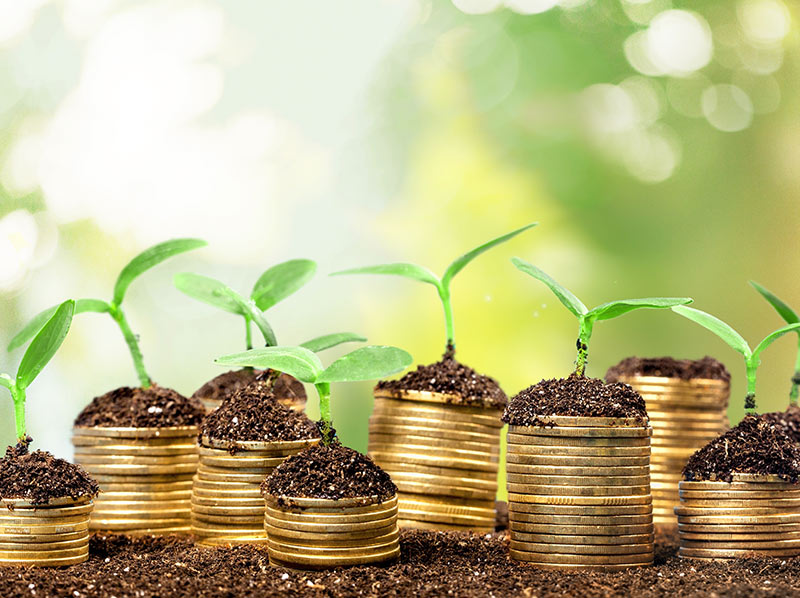Brussels regulates green bonds to increase environmental debt issuance

The European Union wants to give a boost to green bonds by approving a community regulation that sets the conditions. The deepening of El Pais
The draft regulation establishes significant penalties for verifiers who improperly endorse the greening of a debt placement on the market
The so-called green bonds or debt issues with environmental criteria already exceed 250,000 million euros per year in the global market, but still represent just over 3% of the placements made in total. The European Commission wants to give a boost to this type of debt with the approval, for the first time, of a Community regulation that establishes the conditions for being able to label a bond issue as green. Brussels is confident that the stimulus of green bonds will help finance the investments needed to reach the emission reduction targets in 2030, which require the annual mobilization of around 330,000 million euros.
The new rules, contained in a draft regulation that the European Commission plans to adopt on Tuesday, establish the obligations that must be assumed by debt issuers labeled as “European green bonds”. The regulation, to which EL PAÍS has had access, also establishes a system of registration and supervision of companies acting as external auditors to verify the validity of a trademark that is expected to be in increasing demand and with higher yields than traditional bonds.
The bill, which is now to be drafted by the Council and the European Parliament, provides for significant penalties of up to € 200,000 plus periodic fines for verifiers who deliberately or negligently fail to comply with their obligations of rigor and neutrality. The Commission wants to avoid the risk of greenwashing by companies that obtain green financing on the market but use the capital for dubious sustainable activities.
Brussels believes, in fact, that the growth of green bonds is still being held back by factors such as investors' distrust of a non-subjective label and the need for issuers to request the certification of various external auditors to try to offer certain guarantees.
In the most energy-intensive industrial sectors (from cement to paper to steel), issuance of green bonds is very low because companies fear being accused of trying to disguise the environmental impact of their activities or exploiting a label that does not they deserve.
GREEN INVESTMENT STANDARD
The Commission is confident that the new regulation will remove doubts and allow all investors to buy green bonds with the assurance that their money will be used to finance projects compatible with the EU's environmental objectives. Brussels believes the new standard will also make it easier for issuers to lower verification costs and that many more companies will venture into the market with the approval of the label created in the new regulation: EuGB, the acronym for European Green Bond.
The regulation requires that all capital raised from green debt issuance must be used " to finance economic activities that are environmentally sustainable (…) or that contribute to the transformation of the activities to be environmentally sustainable ", according to the explanatory text that precedes the regulation. .
Acceptable activities are established by the taxonomy or classification that the EU is developing to identify the sectors with the greatest potential to contribute to environmental objectives. Among the first to be designated are energy, transport, production and buildings. Brussels estimates that the classification already covers 40% of listed companies in these sectors, which represent 80% of direct CO2 emissions in Europe.
The Commission expects that the combination of the taxonomy and the green bond regulation will facilitate the energy transition in the most emission-intensive sectors, which will need significant funding to adapt to the new levels of reduction required. The EU has raised the reduction target for 2030 from 40% to 55%. And it has set the target of zero emissions by 2050. Brussels estimates that more than 330 billion euros a year will be needed to finance a large-scale industrial and social transformation during this decade alone.
MORE ECONOMIC ISSUE
The new regulation, according to the Commission, will make it easier to raise capital on the markets to finance the transition. The availability of a European green label, according to the EU body, will make it cheaper to place this debt because issuers will be able to count on a single favorable external audit. Currently, according to Brussels, companies that focus on green debt seek approval from several external verifiers to convince investors who are reluctant to view alleged green emissions.
Even without a common European standard, the market has developed at a rapid pace in recent years. From € 600 million for the first issue of green bonds in Europe in 2007 by the European Investment Bank, it grew to € 53.8 billion in 2017. The figure doubled two years later, to exceed 107 billion. . And even in 2020, a year of slower activity due to the covid-19 pandemic, a new record was set with almost 130 billion euros.
The EU has already become the global market leader with 49% of total emissions, which amounted to 252 billion in 2020. Brussels is confident it will consolidate this leadership with the Pandemic Recovery Fund, which will issue debt totaling € 800 billion. Of this issue, 30% will be green, so the EU alone will double the current size of the global debt market for sustainable projects. The commission estimates that if the current pace is maintained, green emissions will exceed € 830 billion globally by 2023.
(Extract from the Epr review)
This is a machine translation from Italian language of a post published on Start Magazine at the URL https://www.startmag.it/energia/bruxelles-regola-le-obbligazioni-verdi-per-aumentare-lemissione-di-debito-ambientale/ on Sat, 10 Jul 2021 06:13:53 +0000.
